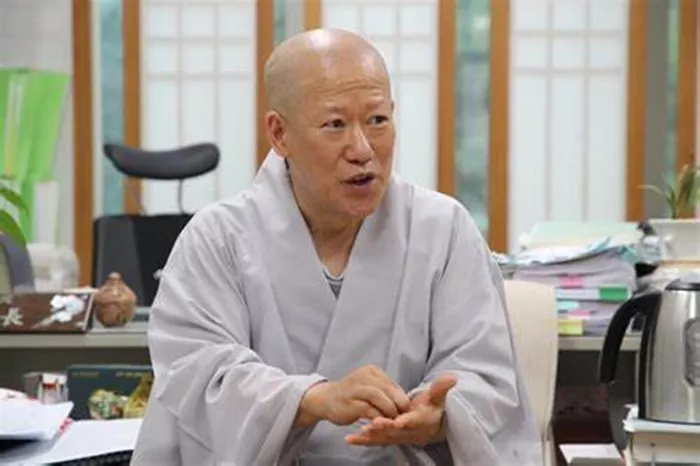What Is Mahayana Buddhism?
Mahayana Buddhism is one of the two major branches of Buddhism, the other being Theravāda. It emerged around the first century CE and spread to many regions, including China, Japan, Korea, Tibet, and Vietnam. The word Mahayana means “Great Vehicle,” symbolizing its goal of guiding many beings toward enlightenment.
Mahayana Buddhism emphasizes compassion (karuṇā) and wisdom (prajñā). It teaches that all beings can attain Buddhahood. Unlike Theravāda, which focuses on personal liberation, Mahayana encourages followers to become bodhisattvas—beings who delay their own enlightenment to help others reach Nirvana.
Where Is Mahayana Buddhism Practiced Today?
1. China
China has the largest number of Mahayana Buddhists today. The religion arrived in China in the first century CE and became a major part of Chinese culture. Many schools of Mahayana Buddhism, such as Chan (Zen) and Pure Land, developed in China. Temples, monasteries, and lay practitioners continue to practice Mahayana Buddhism in modern times.
2. Japan
Japan has a strong tradition of Mahayana Buddhism. Schools like Zen, Pure Land (Jōdo-shū), and Nichiren Buddhism have millions of followers. Many Japanese people visit temples, chant sutras, and follow Buddhist teachings in their daily lives. Even though modern Japan is highly secular, Buddhism remains important in funerals, festivals, and spiritual practice.
3. Korea
Korea follows a Mahayana Buddhist tradition called Seon Buddhism, which is similar to Zen. Monks and laypeople practice meditation and chanting. Despite the rise of Christianity, Buddhism remains a key part of Korean culture, with temples actively teaching Mahayana doctrines.
4. Tibet
Tibetan Buddhism is part of the Mahayana tradition but has unique features influenced by Tantric practices. Many Tibetans continue to follow Buddhist teachings, even in exile. The Dalai Lama is a famous Mahayana Buddhist leader.
5. Vietnam
Vietnamese Buddhism follows both Mahayana and Theravāda traditions. The most common Mahayana school in Vietnam is Pure Land Buddhism, where followers chant the name of Amitabha Buddha to seek rebirth in the Pure Land.
6. Other Countries
Mahayana Buddhism has also spread to the West, with many centers in the United States, Canada, Europe, and Australia. Many Westerners are drawn to Zen meditation, mindfulness, and the compassionate teachings of Mahayana Buddhism.
What Are the Key Teachings of Mahayana Buddhism?
1. The Bodhisattva Path
A bodhisattva is someone who seeks enlightenment not only for themselves but for all beings. The Bodhisattva Vows guide Mahayana practitioners to develop compassion and wisdom while working to help others.
2. The Three Bodies of the Buddha (Trikaya)
Mahayana Buddhism teaches that the Buddha has three forms:
Dharmakaya (Truth Body) – the ultimate reality beyond form.
Sambhogakaya (Bliss Body) – the spiritual body that appears to advanced practitioners.
Nirmanakaya (Manifested Body) – the physical body that appears in the world, like the historical Buddha, Siddhartha Gautama.
3. The Doctrine of Emptiness (Śūnyatā)
The famous Mahayana philosopher Nāgārjuna taught that all things are empty of inherent existence. This means everything depends on other things and has no fixed nature. This teaching helps people overcome attachment and suffering.
4. Faith in Pure Land Buddhism
Pure Land Buddhism teaches that chanting the name of Amitabha Buddha with faith can lead to rebirth in the Pure Land, a place where enlightenment is easier to achieve. This practice is popular in China, Japan, Korea, and Vietnam.
How Is Mahayana Buddhism Practiced Today?
1. Meditation
Many Mahayana schools emphasize meditation. Zen Buddhism focuses on sitting meditation (zazen) to achieve insight. Tibetan Buddhism uses visualization and mantra chanting. Meditation is a key part of modern Buddhist practice worldwide.
2. Chanting Sutras and Mantras
Mahayana Buddhists chant sacred texts, such as the Lotus Sutra and Heart Sutra. Many also recite mantras, like “Om Mani Padme Hum”, which is associated with Avalokiteshvara, the Bodhisattva of Compassion.
3. Making Offerings and Visiting Temples
Buddhists visit temples to make offerings of incense, food, and flowers. They bow before statues of the Buddha and bodhisattvas as a sign of respect.
4. Practicing Compassion and Charity
Helping others is central to Mahayana Buddhism. Many Buddhists engage in charitable work, including feeding the poor, building schools, and supporting humanitarian causes.
5. Observing Buddhist Festivals
Mahayana Buddhists celebrate special festivals such as:
Vesak – celebrating the birth, enlightenment, and passing of the Buddha.
Ullambana (Ghost Festival) – a time to honor ancestors and help spirits find peace.
Bodhi Day – marking the day the Buddha attained enlightenment.
Is Mahayana Buddhism Declining?
Some people believe Buddhism is declining due to modernization and secularization. In some countries, young people are less interested in religious practice. However, Mahayana Buddhism is still strong in many places. It has adapted to modern life through online teachings, meditation apps, and social activism.
In the West, interest in Zen, mindfulness, and Buddhist philosophy is growing. Many universities, meditation centers, and online platforms teach Mahayana Buddhist principles. The influence of Mahayana Buddhism continues to spread globally.
Conclusion
Mahayana Buddhism is still widely practiced today. It remains a major spiritual tradition in China, Japan, Korea, Vietnam, Tibet, and the West. Its teachings on compassion, wisdom, and mindfulness continue to guide millions of people. Whether through meditation, chanting, charity, or temple visits, Mahayana Buddhism remains a vibrant and living tradition in the modern world.

